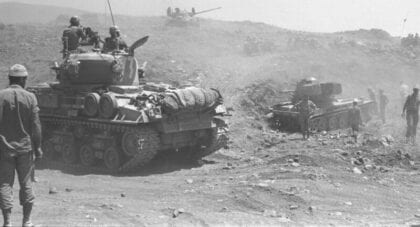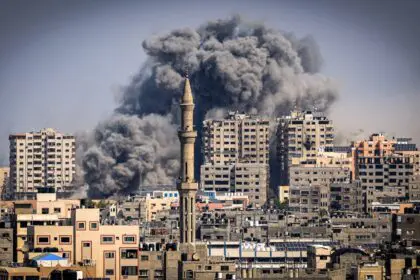Introduction

In Palestine, the traditional rivalry between the two old and ambitious Jerusalem families, the Husaynis and the Nashashibis, whose members had held government posts in the Ottoman period, hampered the effectiveness of resistance of Palestinians against British rule and the rising influence of de Zionist movement.
Most Arab groups were led by the Husayni family, which was strongly anti-British. Nevertheless, in 1921 the British High Commissioner appointed Amin al-Husayni Grand Mufti of Jerusalem and president of the new Supreme Muslim Council, which controlled funds raised from religious charitable endowments.
The World Zionist Organization (WZO) was regarded as the de facto Jewish Agency which the mandate called for. Because the president of the WZO, Chaim Weizmann, remained in London, the Polish-born émigré David Ben-Gurion became the acting leader of the Jewish community in Palestine, the Yishuv. The community established its own assembly (Vad Leumi), labor movement, schools, courts, taxation system, health services, and a number of industrial enterprises. It also formed a military organization, the Haganah.
The Jewish Agency was controlled by a group within the WZO, called the Labour Zionists. They aimed at cooperation with the British and Palestinians alike. The Labour Zionists were opposed to the Revisionist Zionists, founded in 1925 and led by Vladimir Jabotinsky.
The radical Revisionists did not accept the idea of a Jewish homeland in part of Palestine. They wanted a Jewish state stretching across all of Palestine, including Transjordan. They also formed their own military branch, the Irgun Zvai Leumi (National Military Organization).
Escalation
The years 1923-1929 were relatively peaceful, partly due to a decline in Jewish immigration. In 1927, the number of Jewish emigrants exceeded that of immigrants, and in 1928 the net Jewish immigration was no more than 10 persons. In August 1929, however, serious communal clashes in Jerusalem, Safed, and Hebron disrupted the relative calm between the communities after a dispute about access to the Western part of the Wailing Wall in Jerusalem, with the loss of the lives of 133 Jews and 116 Palestinians.
A British royal commission attributed the clashes to the fact that ‘the Arabs have come to see in Jewish immigration not only a menace to their livelihood but a possible overlord of the future’. A second commission stated in its report that there was at that time no margin of land available for agricultural settlement by new immigrants. The reports formed the basis of the Passfield White Paper of October 1930, in which the establishment of ‘a national home in Palestine for the Jewish people’ was called ‘a consideration’, that ‘was not central to the mandate governance’. The document called for a limitation of Jewish immigration. It also recommended that land be sold only to landless Palestinians.
In response to protests from Palestinian Jews and London Zionists, in February 1931 the British Prime Minister Ramsay MacDonald sent a letter to Chaim Weizmann nullifying the Passfield White Paper. This letter convinced the Arabs that all recommendations made in their favor could be annulled by Zionist influence in London.
From the early 1930s onward, developments in Europe once again began to impose themselves forcefully on Palestine. The accession to power of the Nazis in Germany in 1933 and the widespread persecution of Jews throughout central and eastern Europe gave impetus to Jewish immigration: 30,000 in 1933, 42,000 in 1934, and 61,000 in 1935. By 1936 the Jewish population of Palestine had reached 370,000, one-third of the total population, and the Jewish landholding had risen to one-seventh of the cultivatable land in Palestine.
The Palestinian population of Palestine also grew rapidly, largely by natural growth. Nearly 90 percent of the Palestinians continued to be employed in agriculture, notwithstanding the deterioration of the economy. By the mid-1930s, however, many landless Palestinians had joined the expanding Palestinian proletariat working as building laborers in expanding urban centers. This caused profound changes in the foundations of Palestinian economic and social life, which were to have lasting effects.
History of the Palestinian-Israeli Conflict
This article is part of our coverage of the history of the Palestinian-Israeli Conflict.
Fanack’s historical record meticulously chronicles the Palestinian-Israeli Conflict in a chronological sequence, encompassing its origins, crises, wars, peace negotiations, and beyond. It is our most exhaustive historical archive.



